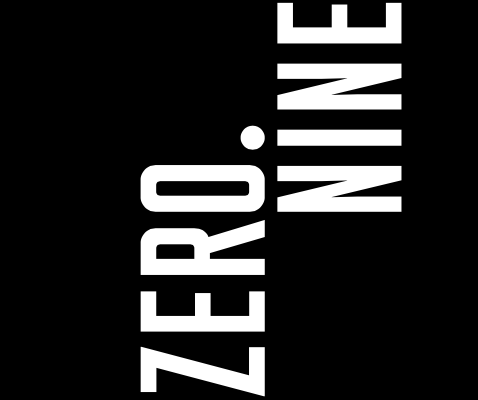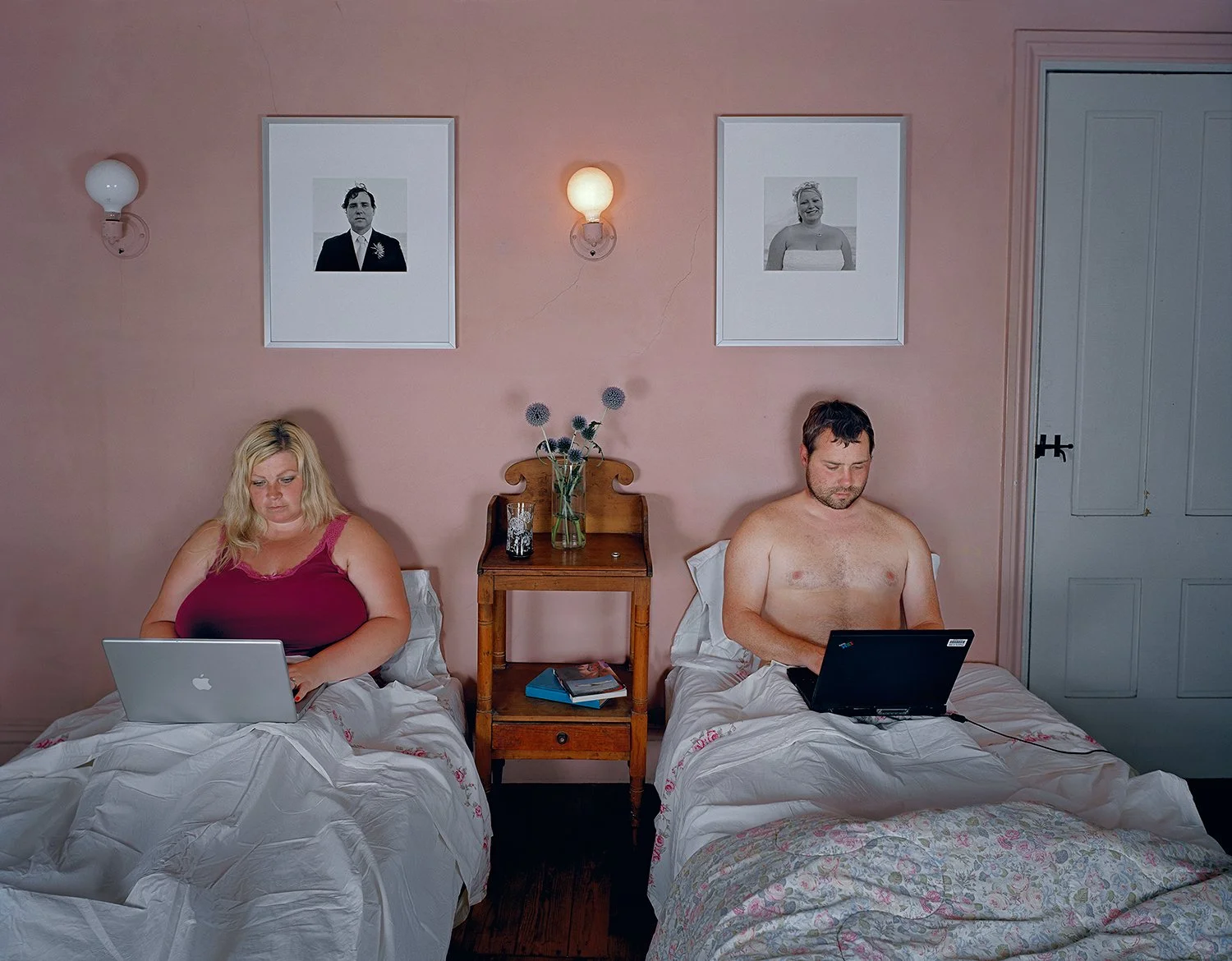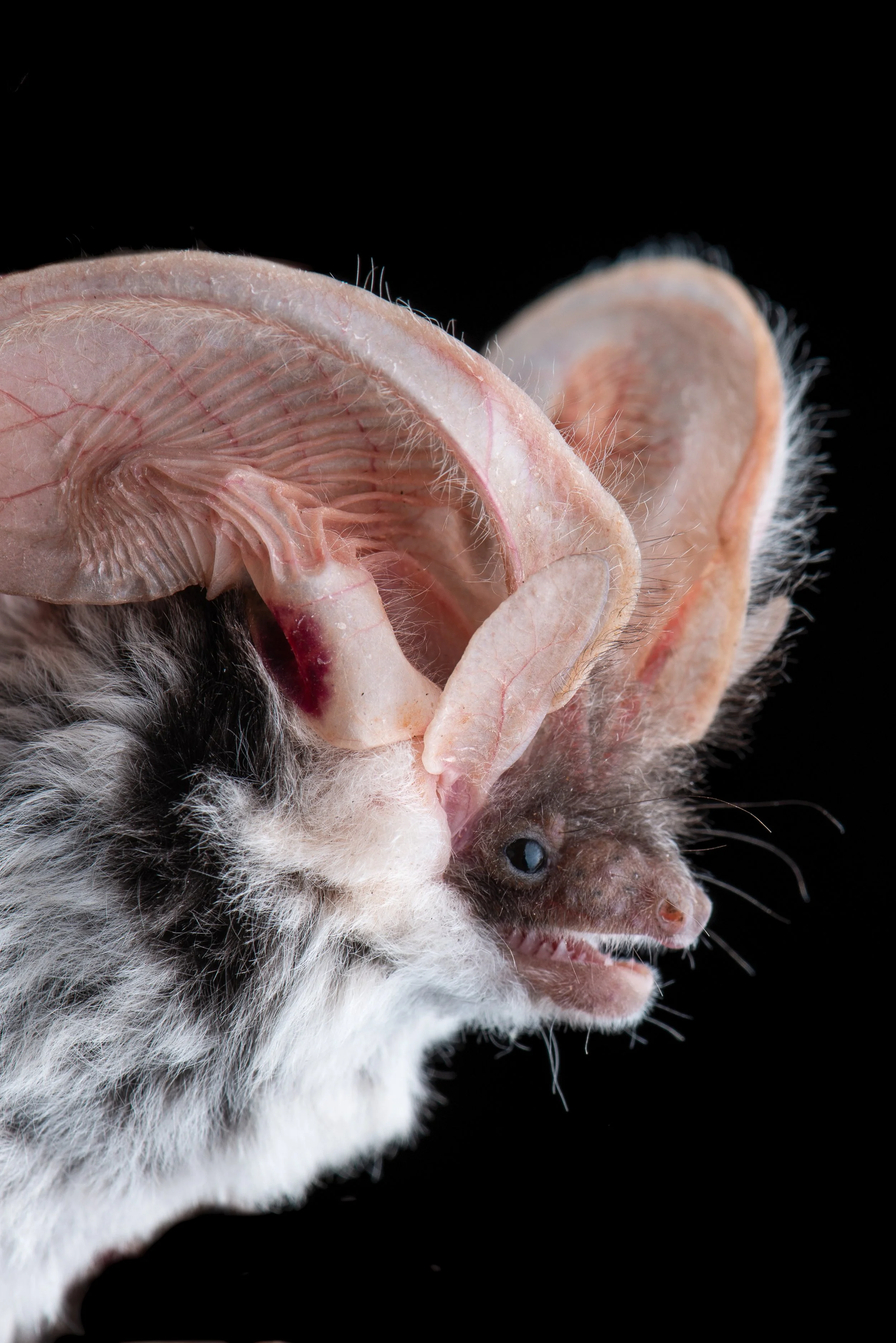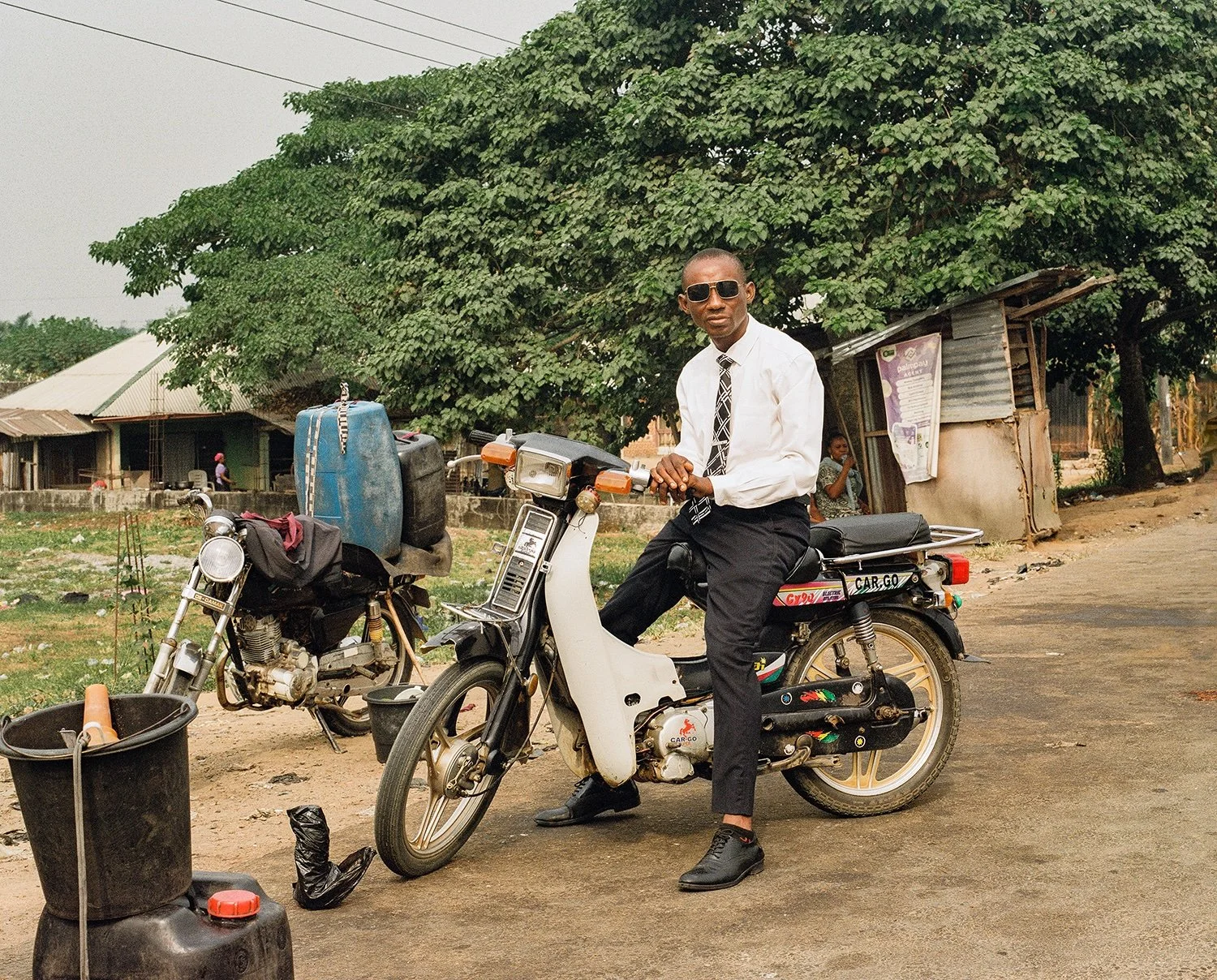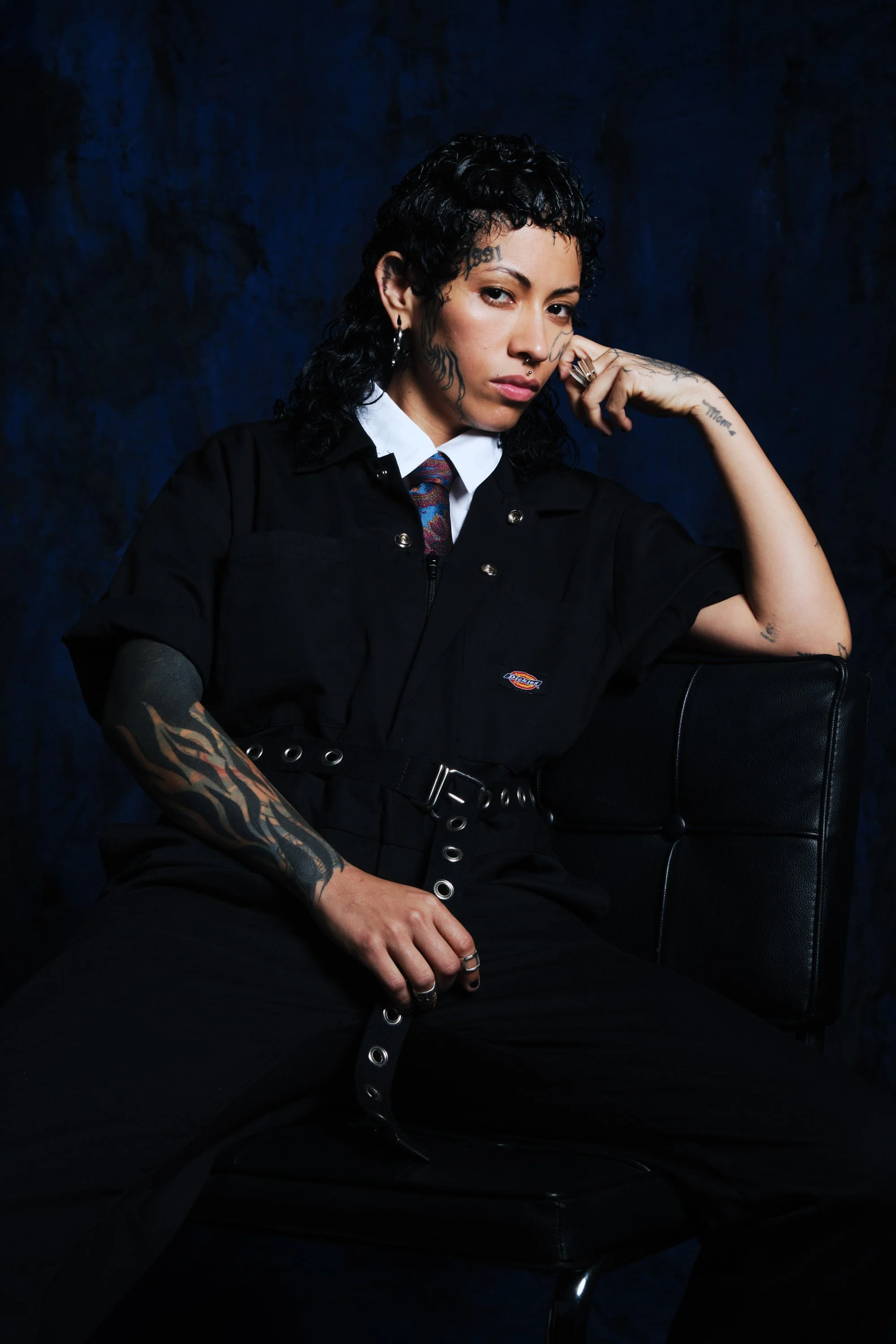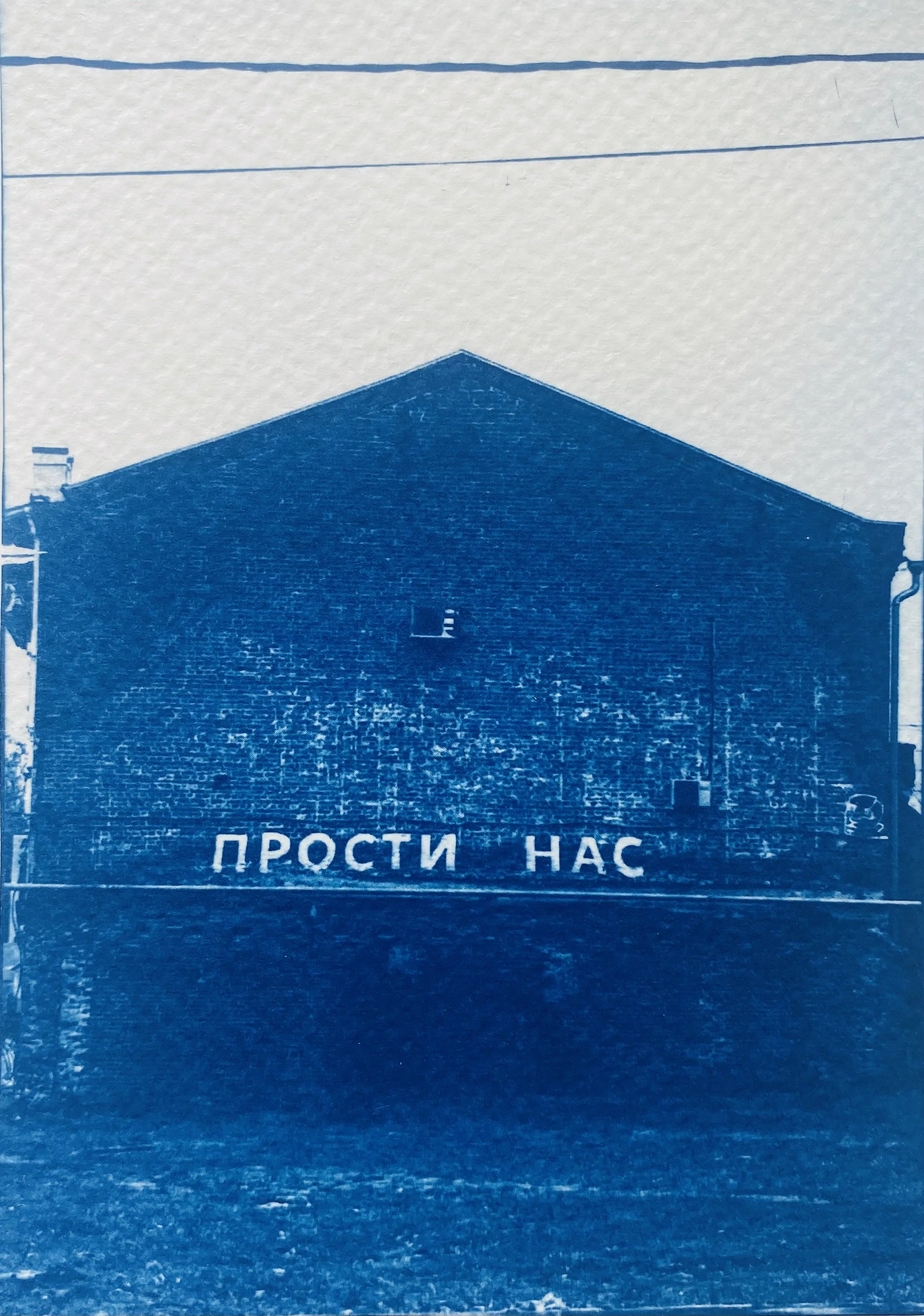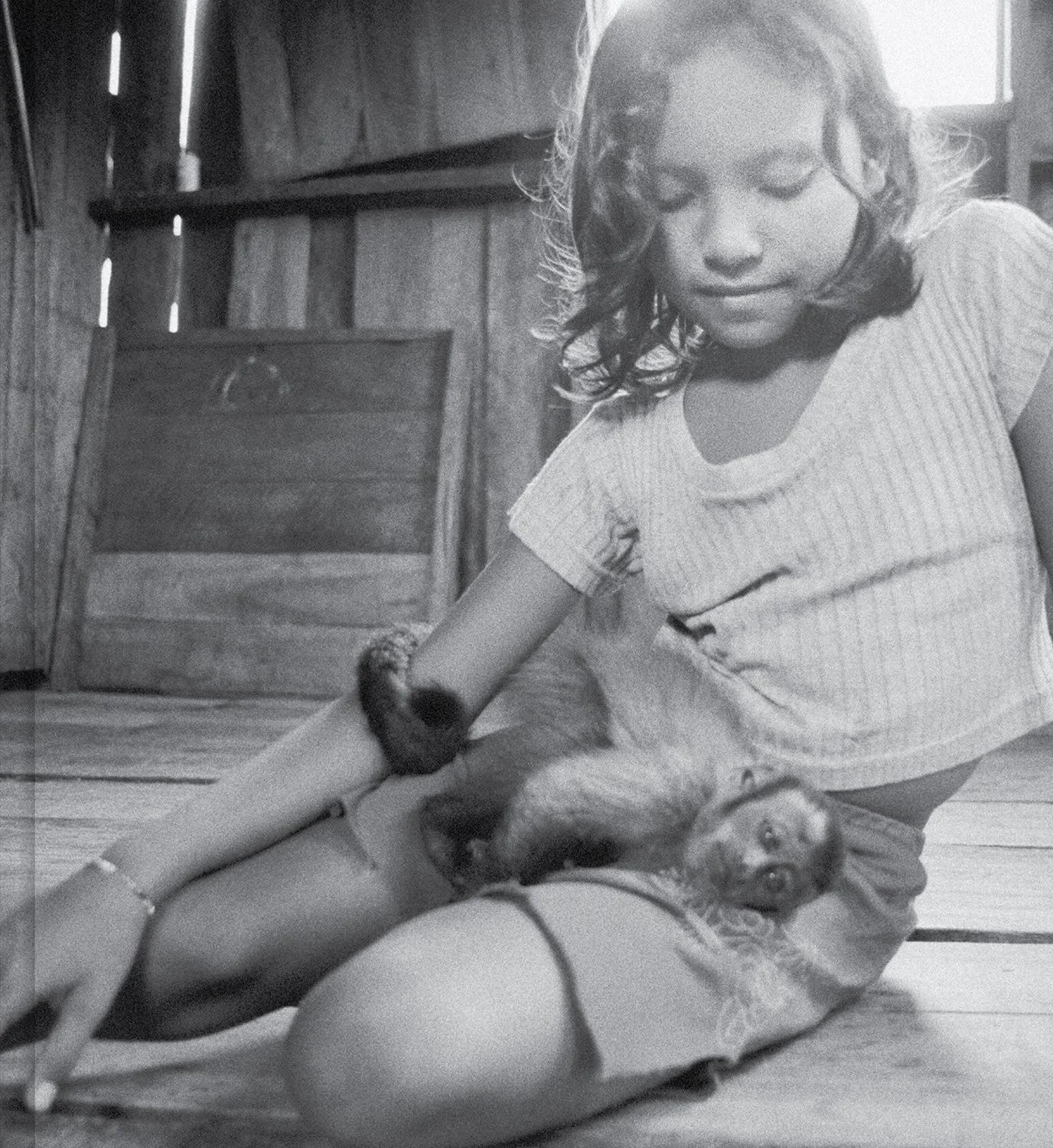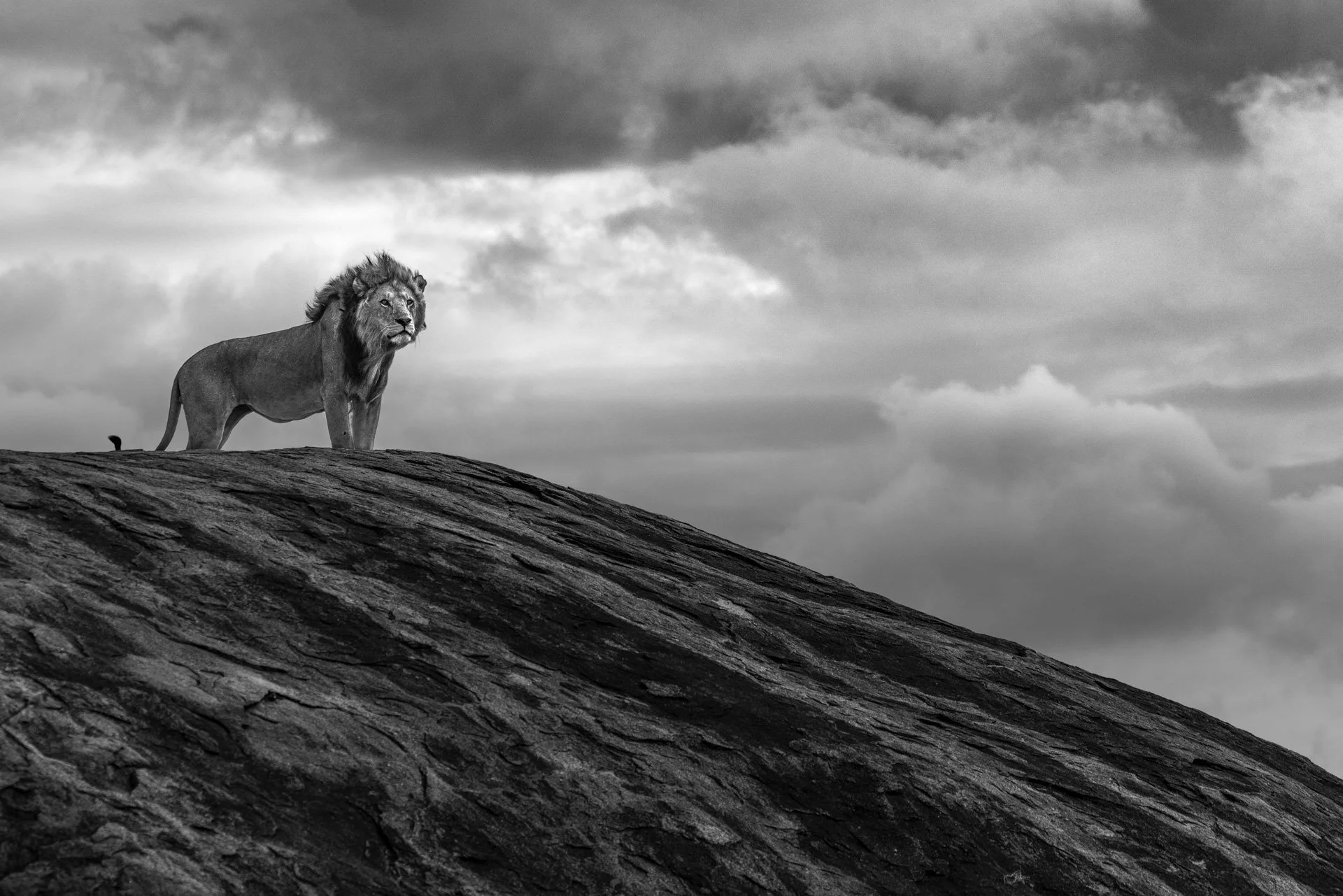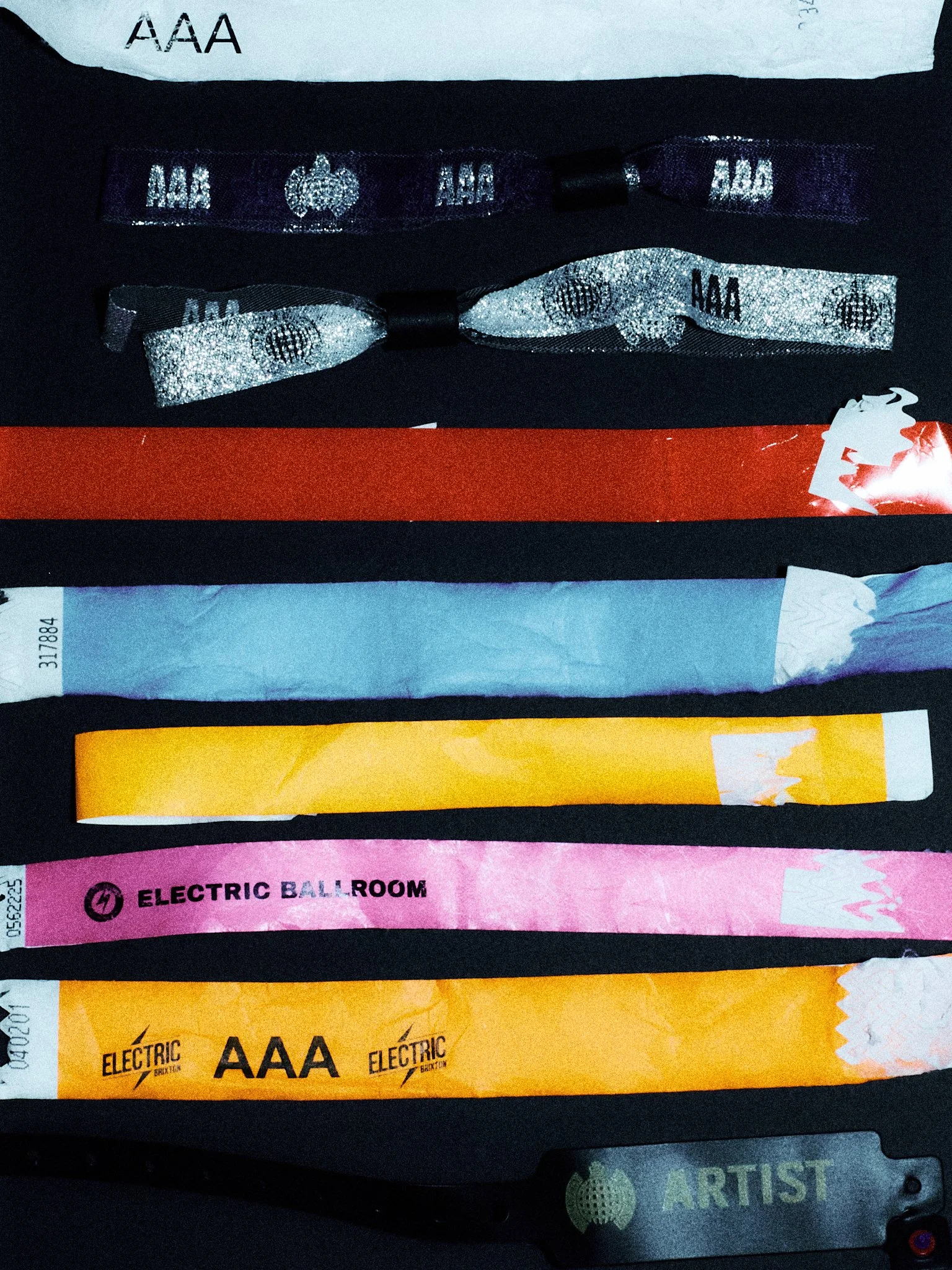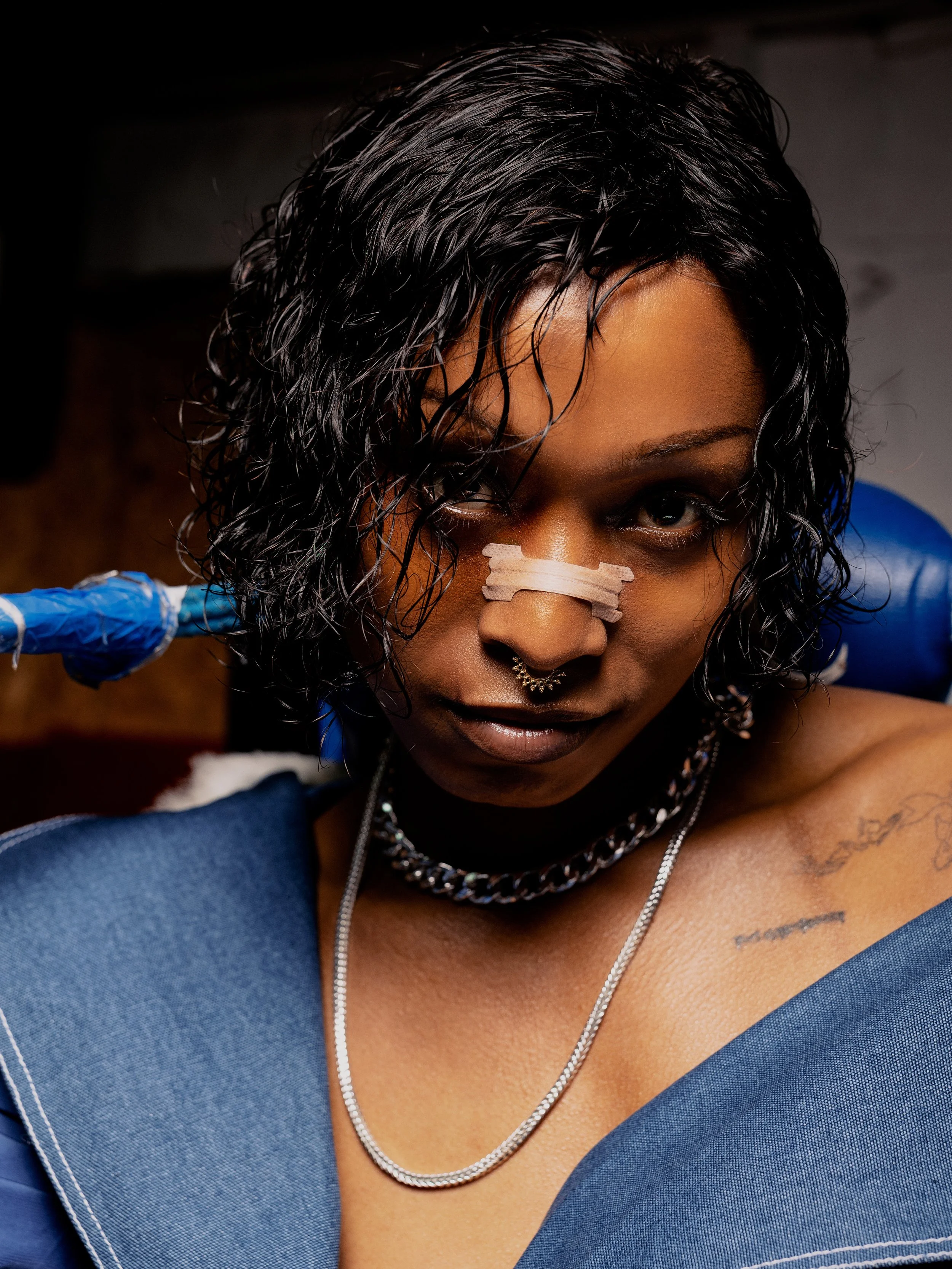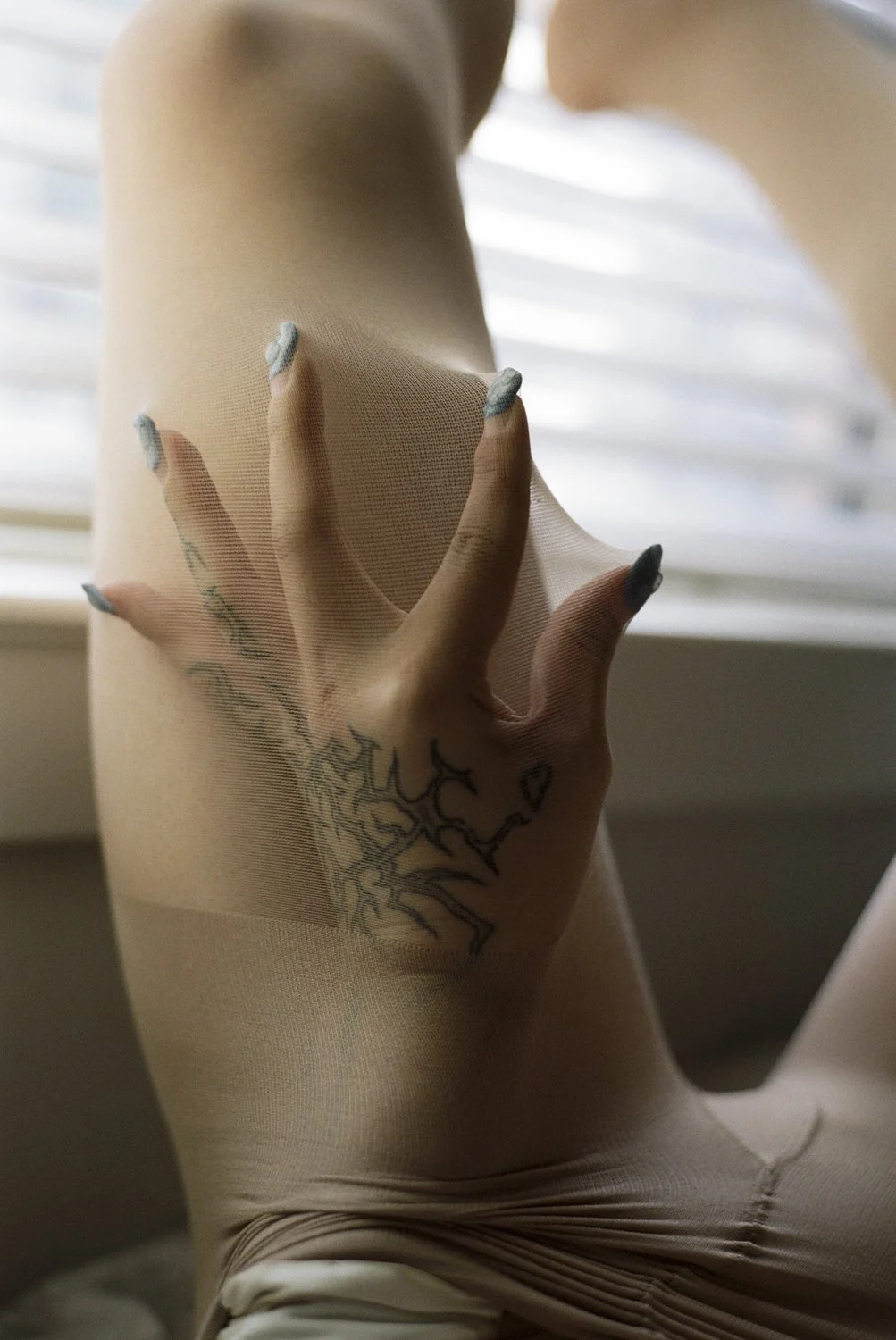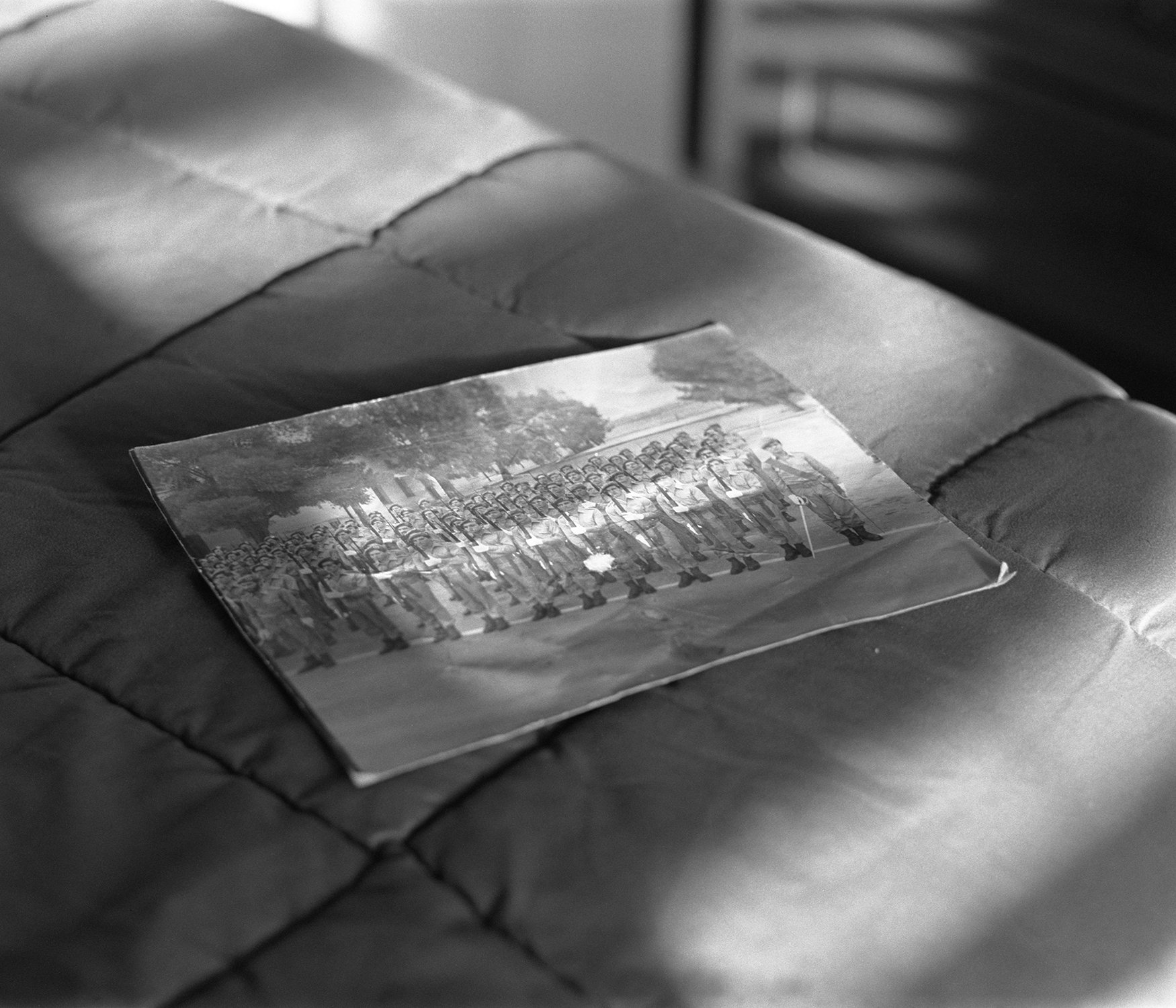The in-between worlds of Kat Duma
Singer, musician, writer and producer Kat Duma was born in Belgrade, Serbia, and now lives in Toronto. She’s making a name for herself in the electronic pop scene, with a very personal style that embraces mystery, imagination and avant-garde spirit whilst also being irresistibly catchy and cool. After releasing five singles over the last three years, she’s finally releasing her first album, Real Life. We caught up with Kat and found her very talkative and friendly.
Interview David Saavedra Photography Christian TrippeBlack Top by Symetria, black jacket by Leem, necklace by KWK by Kay Kwok, rings by Assuwa
You started making classical music when you were five, taught by your grandfather. How were your beginnings?
Good, and tough, because he was a very accomplished professional violinist and had high expectations, so I think I started on a strong footing. I was so young that there wasn’t a violin that was small enough for me to play, so a paper tissue box had to be inserted for me to be able to hold it. My grandfather taught me in the beginning, and then I moved on to another teacher in Toronto.
So, you had classical training, but how did you get into the world of electronic music?
It was maybe in high school. I really wanted to make music and I didn’t know how or where to start, who I could make music with, so the easiest thing for me was to get Ableton and start learning everything myself. I really fell in love with it and now I still follow the same process for learning.
You’re also a DJ but your approach is not exactly for making people dance...
I was talking about it with a friend recently, I think we need another name because it’s DJing but, instead of dance DJing, sometimes I try to make a mix, even on Ableton and I compose my own pieces in between other people’s songs, like continuing a vibe but not necessarily being a DJ mix. I really love doing that, because it tells a story and creates a kind of curious feeling all the way through. When you’re DJing to an audience and everyone’s dancing, people don’t want to stop dancing to think about what’s going on, but when I’m making my own kind of session, I try to create a ‘make it happen’ flow.
Blazer by House of Holland, black mesh ruffled trousers by Hector Maclean, rings by Assuwa, tights model’s own
Before you released your songs as Kat Duma you used to do it with the name of KAADE. Did you not feel represented by that anymore, you thought your musical direction had changed so much that you needed another name?
Maybe a little bit of both. I think in the beginning I started doing music as KAADE because I was too shy to use my own name. I didn’t think about it then, but now I’m looking back and feel that maybe that was the case. And even when I had that name in all my projects everybody used Kat Duma, so I thought why not use my real name.
You started releasing your first singles in 2020 and they have been coming out little by little. So, why has the album process has been so slow?
(Laughs) Because I’m doing everything by myself, it just takes a lot of time. In the earlier songs I was doing the writing, the production, the mixing, the artwork, shooting the videos... all those things. That just takes a long time. But in the last year I was able to get teams to start working with me and now there’s more people involved that can help me with the process and go faster. In the beginning I thought that I had finished a song and it was like “Ok, it’s good”. But no, then I must do this thing and then that thing and the months fly by.
“Between the literal and what is actually happening there is something else, an in-between area. I found those things really interesting.”
Your songs fluctuate between the earthy and the ethereal, it’s as if they were in a kind of limbo. What are you trying to express with them?
I don’t know if I’m very intentional in what I’m doing. I think it’s more like capturing a feeling or a vibe. None of my lyrics are really literal. I think between the literal and what is actually happening there is something else, an in-between area. I found those things really interesting, how we know something without actually knowing it. It’s like a gut feeling and I really feel very strongly about things in that way. Whatever my intuition tells me it’s generally the thing that I should do, what it is is something kind of magical, I don’t know exactly what, but that’s the place where I like to write from.
Several instruments are played on the album. Do you play them all?
There are a few people who are playing, but a lot of the instruments I play myself, like the violin, or sometimes I write the bassline, or a guitar part and I get someone to re-record it because I’m not very good at it and they can make it sound better. The process is quite different in each song. Sometimes I grab a guitar sample and I take it and make it different, or I play it in reverse, so it creates its own melody. With the instruments I can’t play so well I like to make a collage and put some pieces together, or I take little pieces from the things that the other guitarist played and rearrange them. That happens in the song called ‘So Long’.
How many instruments can you actually play?
I started off with violin and then I moved to guitar and then I took opera lessons for a little while. Then I taught myself to play keyboards, but I can only really play chords. So, I feel a can play a lot of instruments but the only one I can actually play well is the violin.
“Now we’ve switched to a full band, which was at first kind of scary, but it sounds really cool, and the band is amazing.”
Kat about playing her music live
How are you going to translate that sound to your live shows? Do you find it difficult to reproduce it?
Yes, in the beginning I was really worried because I had no idea about how I was going to do it. Everything was more electronic then, so it was me on stage with my samplers and laptop and everything, and now we’ve switched to a full band, which was at first kind of scary, but it sounds really cool, and the band is amazing. We have a guitar player, a bassist and a drummer. I’m still running the samplers and the more ethereal electronics, and I play the synth on stage as well as singing. So, there’s a lot going on. I think it sounds better now because live drums bring a kind of energy to the room that a computer doesn’t necessarily have.
Jumper by Symetria
Jumpsuit by Zeynep Kartal
In the way you present yourself in public, your videos, your pictures... You really like to play with your image, your face, your body... Is there a kind of philosophy behind that?
Not necessarily. It's just what I’m drawn to. I feel I could really tell very quickly: “No, I don’t like this”. “Yes, I like this”. What I like is what you end up seeing.
In your videos you have worked with two female visual artists: Mary Chen and Kristie Muller. What have they contributed to the way of presenting yourself?
It was a different situation for each case. Both have a very strong visual identity in what they make, they are really, really good. With Mary was more of: “Ok, we have a storyline, here we’re going to cut, these are the scenes, and this is what we’re going to do”, so we had an exact idea before we started and was collaborative how we came up with things. For Kristie it was more free form. We had a vague idea, like ‘this is a location’, but for her, when she’s editing, I found she took moments from the in between, you know? Like, after shooting, she shouts “cut!”, but continues recording when we talk and that’s the part that she would use. And I think that’s quite interesting because it kind of shows the real person more than if it was posed. It’s like: “Ok, I can relax and that’s what gets into the video”. She really captured something honest.
Is it true that you have worked with Johnny Jewel?
Yes! It was for his Italians Do It Better compilation series ‘After Dark’. We wrote and produced a song for my friend Talvi. Johnny came in and added his little touch to it, then we polished the mix, he added a few things, we came forwards and backwards... It was a fun collaboration, but I never met him in person, it was all done online.
“I started off with violin and then I moved to guitar and then I took opera lessons for a little while.”
In the album you have an unexpected Pixies cover version (Ana). What musicians do you love and have influenced you?
Krautrock band Can influenced me when making this cover but, in general, I don’t know, I find that I listen to a lot of ambient music maybe because it’s what I prefer when I’m working.
What are your next plans for the near future?
First of all, I’m preparing an album release in Toronto and having a live show there. I don’t know if any tour is coming up this year. In terms of the new releases, I know you mentioned before things came out very slowly and I don’t want that anymore. So, I think once I get this thing out, we’ll have so many songs I want to release after the album, and I want to get to work, perfecting the live show and seeing how it goes.
About Kat
To listen to more of her music, visit her Spotify page or follow her on Instagram
Team credits
Interview David Saavedra
Photography Christian Trippe
Beauty Editor Claudine Blythman using MAC
Stylist Lily Lam
Hair stylist Natalie Jibeili using Davines products
Photography assistant Lucian Koncz
Styling Assistant Cabriella Lin
Big thanks to Good Machine
